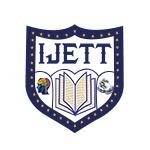Protection Policy Implementation using Web Ontology Language
Protection Policy Implementation using Web Ontology Language |
||
 |
 |
|
| © 2022 by IJETT Journal | ||
| Volume-70 Issue-8 |
||
| Year of Publication : 2022 | ||
| Authors : Lingala Thirupathi, Venkata Nageswara Rao Padmanabhuni |
||
| DOI : 10.14445/22315381/IJETT-V70I8P246 | ||
How to Cite?
Lingala Thirupathi, Venkata Nageswara Rao Padmanabhuni, "Protection Policy Implementation using Web Ontology Language," International Journal of Engineering Trends and Technology, vol. 70, no. 8, pp. 453-462, 2022. Crossref, https://doi.org/10.14445/22315381/IJETT-V70I8P246
Abstract
This article is an experiment leveraging web ontology language to develop and evaluate Mandatory Access
Control with Bell-La Padula (BLP) attributes for a Multi-Level Protection lattice model. The semantic web is built on top
of the www to make data machine-readable so data processing and administration can be improved. The Web ontology
language is a semantic web computational logic-based language for representing complex knowledge in a semantic
format. Construct dominance relationships between variables within the lattice model and run different queries to see if the
subject with security clearance can read or write to the object with security classification using the Multi-level protection
(MLP) ontology. Furthermore, the ontology would only enable information to move from items with lower categorization
to entities with higher classification by utilizing BLP characteristics.
Keywords
MLP, OWL, ontology, Security, Semantic Web.
Reference
[1] Sanger D.E, Perlroth N, Thrush G, & Rappeport A, 2018. [Online]. Available:
https://www.nytimes.com/2018/12/11/us/politics/trump-china-trade.html
[2] Thomas, Jason, “A Case Study Analysis of the US Office of Personnel Management Data Breech,” 2019.
10.13140/RG.2.2.36670.23360.
[3] Basile, Cataldo & Lioy, Antonio & Scozzi, Salvatore & Vallini, Marco, “Ontology-Based Policy Translation,” vol. 63, pp. 117-126,
2009. 10.1007/978-3-642-04091-7_15.
[4] Talib, A., Alomary, F., Alwadi, H. and Albusayli, R, “Ontology-Based Cyber Security Policy Implementation in Saudi Arabia,”
Journal of Information Security, vol. 9, pp. 315-333, 2018. Doi: 10.4236/jis.2018.94021.
[5] Välja, M., Heiding, F., Franke, U. et al., “Automating Threat Modeling using an Ontology Framework. Cybersecur,” vol. 3, pp. 19,
2020. https://doi.org/10.1186/s42400-020-00060-8.
[6] Panossian, Garo, "Multi-Level Secure Data Dissemination," Electronic Theses, Projects, and Dissertations, vol. 946,
https://scholarworks.lib.csusb.edu/etd/946.
[7] Roy, S., Dayan, G.S., Devaraja Holla, V, “Modeling Industrial Business Processes for Querying and Retrieving Using
OWL+SWRL,” In: Panetto, H., Debruyne, C., Proper, H., Ardagna, C., Roman, D., Meersman R. Eds., On the Move to Meaningful
Internet Systems. OTM 2018 Conferences, OTM 2018. Lecture Notes in Computer Science, vol. 11230, 2018. Springer, Cham.
https://doi.org/10.1007/978-3-030-02671-4_31.
[8] Lingala Thirupathi and Venkata Nageswara Rao Padmanabhuni, "Multi-level Protection (Mlp) Policy Implementation using Graph
Database," International Journal of Advanced Computer Science and Applications (IJACSA), vol. 12, no. 3, 2021.
http://dx.doi.org/10.14569/IJACSA.2021.0120350.
[9] Chen, J., Hu, P., Jimenez-Ruiz, E. et al., “OWL2Vec*: Embedding of OWL Ontologies,” Mach Learn, vol. 110, pp. 1813–1845,
2021. https://doi.org/10.1007/s10994-021-05997-6.
[10] Minh Hoang Lien Vo & Quang Hoang, “Transformation of UML Class Diagram into OWL Ontology,” Journal of Information and
Telecommunication, vol. 4, no. 1, pp. 1-16, 2020. DOI: 10.1080/24751839.2019.1686681.
[11] Chatterjee A, Prinz A, Gerdes M, Martinez S, “An Automatic Ontology-Based Approach to Support Logical Representation of
Observable and Measurable Data for Healthy Lifestyle Management: Proof-of-Concept Study,” J Med Internet Res, vol. 23, no. 4,
pp. e24656, 2021. [Online]. Available: https://www.jmir.org/2021/4/e24656, DOI: 10.2196/24656.
[12] Husáková, Martina, and Vladimír Bureš, "Formal Ontologies in Information Systems Development: A Systematic Review,"
Information vol. 11, no. 2, pp. 66, 2020. https://doi.org/10.3390/info11020066.
[13] Maxat Kulmanov, Fatima Zohra Smaili, Xin Gao, “Robert Hoehndorf, Semantic Similarity and Machine Learning with
Ontologies,” Briefings in Bioinformatics, vol. 22, no. 4, 2021. https://doi.org/10.1093/bib/bbaa199.
[14] Bani-Hani, Anoud; Adedugbe, Oluwasegun; Benkhelifa, Elhadj; and Majdalawieh, Munir, "Fandet Semantic Model: An OWL
Ontology for Context-Based Fake News Detection on Social Media," All Works, 4756, 2021.
https://zuscholars.zu.ac.ae/works/4756.
[15] Faezeh Mostajabi, Ali Asghar Safaei, Amir Sahafi, “A Systematic Review of Data Models for the Big Data Problem,” IEEE Access,
vol. 9, pp. 128889-128904, 2021. 10.1109/ACCESS.2021.3112880.
[16] Ben Mahria, B., Chaker, I. & Zahi A, “A Novel Approach for Learning Ontology from Relational Database: From the Construction
to the Evaluation, J Big Data, vol. 8, pp. 25, 2021. https://doi.org/10.1186/s40537-021-00412-2
[17] [Online]. Available: https://documentation.mindsphere.io/MindSphere/howto/howto-create-ontology-owl.html
[18] [Online]. Available: https://go-protege-tutorial.readthedocs.io/en/latest/ObjectProperties.html
[19] [Online]. Available: https://ontology101tutorial.readthedocs.io/en/latest/OWL_ClassRestrictions.html
[20] [Online]. Available: https://docs.oracle.com/cd/E24693_01/appdev.11203/e11828/owl_concepts.htm.

